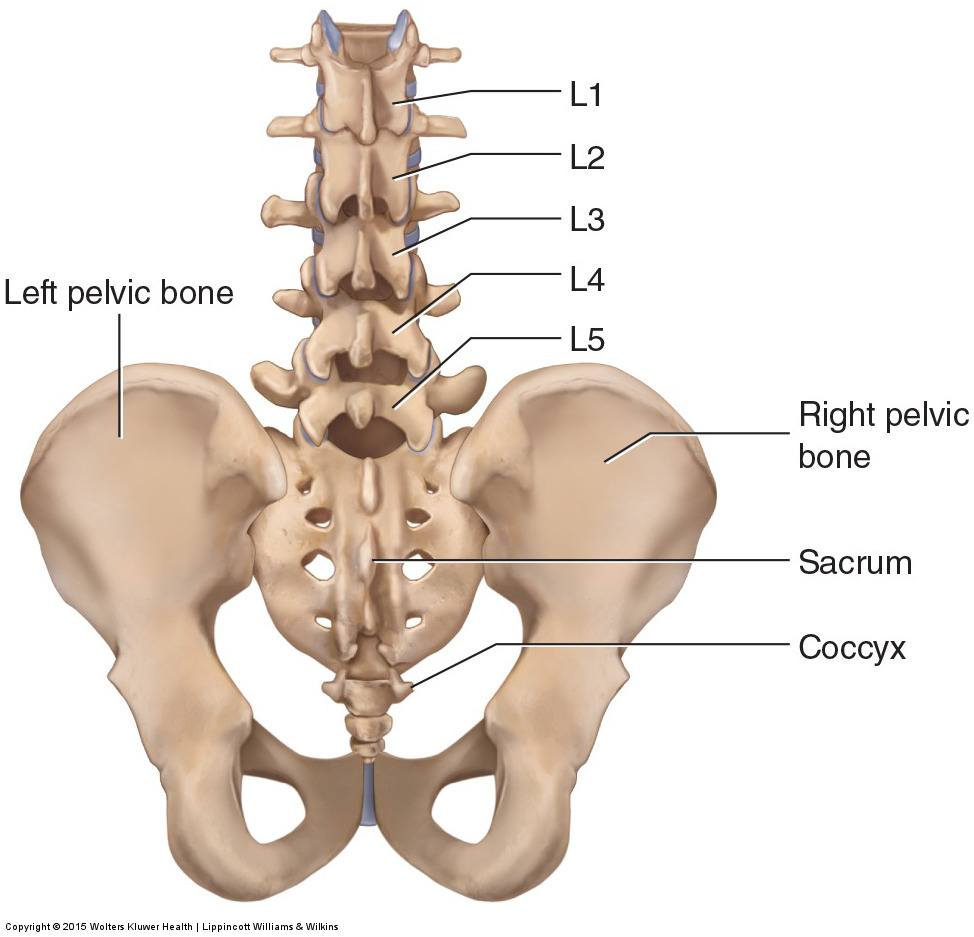Spinal joint dysfunction is an extremely common condition. It can exist on its own, but as with muscle tightness, it usually coexists as a part of most every other neck and back condition. Because this condition is so pervasive, it is extremely important to know how to assess and treat it. Joint dysfunction literally means “bad motion.” There are two types of joint dysfunction: too little motion termed a hypomobility; and too much motion termed a hypermobility. Due to the complex interplay of the joints of the spine, spinal joint dysfunction merits its own article.

Posterior view of the lumbar spine. Permission: Joseph E. Muscolino. Manual Therapy for the Low Back and Pelvis – A Clinical Orthopedic Approach (2015).
The spine is usually thought of as a column of bones, but it could just as easily be looked upon as a column of joints, each one interacting with the others to create coordinated and fluid motion of the trunk, neck, and head. Between the sacrum and occiput there are 25 segmental joint levels. If the motion is altered at any one joint level, compensations usually occur at adjacent segmental levels to restore proper motion of the spine. For this reason a hypomobility at one level usually results in a compensatory hypermobility at an adjacent level, and vice versa. These compensations can then leapfrog up (or down) the spine, creating entire regions of dysfunction.
Further, each segmental joint level comprises three separate joints: one intervertebral disc joint located anteriorly and two (paired left and right) facet joints located posteriorly. (The only exceptions are the atlanto-occipital joint between the atlas [C1] and the head, which has no disc joint; and the atlantoaxial joint between the atlas and the axis [C2], in which the disc joint is replaced by the atlanto-odontoid joint.) Similar to compensation across segmental joint levels, alteration of function of one joint at a segmental level can lead to compensations at another joint at that same segmental level (for example, a unhealthy disc might result in a compensation that increases stress load to the facet joints at that level). In all, there are 74 spinal joints in the lumbar, thoracic, and cervical regions of the spine between the sacrum and occiput. To this, we must add the 24 spinocostal joints located between the spine and the rib cage in the thoracic region. Dysfunction of the rib joints can also affect trunk motion and therefore should be assessed and treated, if present, along with interspinal joints. With all of these joints, the opportunity for compensatory hypomobilities and hypermobilities are many.
Note: The terms misalignment, bone out of place, and subluxation are often used, especially in the world of chiropractic, in place of the term joint dysfunction. However, technically they are not the same. Joint dysfunction describes the functional movement of a joint whereas the other terms describe the structure of the joint, specifically the static positioning of the bones of the joint. Although there is often a correlation between the static position of the bones at a joint and the ability of that joint to move, this is not always the case.


